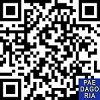PROSES BERPIKIR ALJABAR PADA SISWA KELAS VIII DALAM MENYELESAIKAN SOAL POLA GEOMETRIS
Abstract
Abstrak: Berpikir aljabar merupakan hal yang penting karena untuk mengembangkan kemampuan berpikir siswa. Proses ini diawali dengan mengekstraksi informasi kemudian menyajikan informasi tersebut dan menafsirkan temuan. Penelitian ini bertujuan untuk mendeskripsikan proses berpikir aljabar pada siswa kelas VIII dalam menyelesaikan soal pola geometris. Instrumen pendukung pada penelitian ini meliputi soal pola geometris dan pedoman wawancara. Subjek penelitian ini adalah 2 siswa kelas VIII. Hasil penelitian ini menunjukkan bahwa subjek mengekstraksi informasi yang terdapat pada soal. Subjek menemukan pola yang terdapat pada gambar. Subjek dapat menyajikan pola gambar dengan pola bilangan dan dapat menggambar untuk pola berikutnya. Subjek dapat menentukan pola yang tidak diketahui (pola ke n) dalam bentuk persamaan matematik.
Abstract: Algebraic thinking is important because it develops students' thinking skills. This process begins with extracting information then presenting that information and interpreting the findings. This study aims to describe the process of algebraic thinking in class VIII students in solving geometric pattern problems. Supporting instruments in this study include questions about geometric patterns and interview guidelines. The subjects of this study were 2 students of class VIII. The results of this study indicate that the subject extracts the information contained in the questions. The subject finds the pattern in the picture. Subjects can present picture patterns with number patterns and can draw for the next pattern. Subjects can determine the unknown pattern (nth pattern) in the form of a mathematical equation.Keywords
Full Text:
PDFReferences
Debrenti, E. (2015). Visual Representations in Mathematics Teaching: An Experiment with Students. Acta Didactica Napocensia, 8(1), 19–25.
Dindyal, J. (2011). Algebraic Thinking in Geometry at High School Level Students Use of Variables and Unknown. National Institute of Education Singapore.
Hashemi, N., Abu, M. S., Kashefi, H., & Rahimi, K. (2013). Generalization in The Learning of Mathematics. The 2nd International Seminar on Quality and Affordable Education.
Kriegler, S. (2011). Just What Is Algebraic Thinking? Department of Mathematics, UCLA.
Lian, L. H., & Yew, W. T. (2012). Assesing Algebraic Solving Ability: A Theoritical Frameworke. International Education Studies, 5(6). https://doi.org/https://doi.org/10.5539/ies.v5n6p177
Mason, J., Stacey, K., & Burton, L. (2010). Thinking Mathematically. Pearson.
Murtafi’ah, W., & Masfingatin, T. (2015). Proses berpikir mahasiswa dengan kemampuan spatial intelligent tinggi dalam memecahkan masalah geometri. Kadikma, 6(1), 133–148.
NCTM. (2000). Principles and Standards for School Mathematics. Reston.
Nu, A. T. (2019). Proses Berpikir Aljabar pada Siswa SMK dalam Menyelesaikan Permasalahan Barisan. Jurnal Pendidikan Luar Sekolah, 7(2), 75–87.
Nurhayati, D. M., Herman, T., & Suhendra, S. (2017). Analysis of Secondary School Students’ Algebraic Thinking and Math-Talk Learning Community to Help Students Learn. Journal of Physic, 1(1), 1–7.
Radford, L. (2006). Algebraic Thinking and Generalization of Patterns: A Semiotic Perspective. Proceedings of the 28th Annual Meeting of the North American Chapter of the International Group for the Psychology of Mathematics Education.
Ruggiero, V. R. (2011). Beyond Feelings: A guide to Critical Thinking. Mc Graw Hill.
Sari, D. P., & Fiantika, F. R. (2018). Students Algebraic Thinking Processes in Mathematics Problem Solving at Low Mathematics Ability Student Based on Quantitative Reasoning Ability. Edumatika Jurnal Riset Pendidikan Matematika, 1(2), 29–35.
Setyawan, G., & Hayuhantika, D. (2018). Proses Berpikir Aljabar Siswa dalam Memecahkan Masalah Generalisasi Pola Berdasarkan Gaya Kognitif. Jurnal Pendidikan Dan Pembelajaran Matematika, 4(2), 76–83.
Suryowati, E., Nusantara, T., Irawan, E. B., & Sudirman, S. (2019). Junior High School Student’s Strategy in Partial Formal Correspondence Relationship Generalization. Jurnal of Physic: Conference Series. https://doi.org/doi:10.1088/1742-6596/1157/3/032081
Tall, D. (2011). Looking for the Bigger Picture. For the Learning of Mathematics, 31(2), 17–18.
Walkowiak, T. . (2013). Elementary and Middle School Students’ Analysis of Pictorial Growth Patterns. The Journal of Mathematical Behavior, 33(1), 56–71.
Zazkis, R., & Liljedahl, P. (2012). Generalization of patterns: The tension between algebraic thinking and algebraic notation. Educational Studies in Mathematics, 49(3), 379–402.
DOI: https://doi.org/10.31764/paedagoria.v12i2.4969
Refbacks
- There are currently no refbacks.
Copyright (c) 2021 Eny Suryowati, Lia Budi Tristanti

This work is licensed under a Creative Commons Attribution-ShareAlike 4.0 International License.
Paedagoria : Jurnal Kajian, Penelitian dan Pengembangan Kependidikan
Fakultas Keguruan & Ilmu Pendidikan | Universitas Muhammadiyah Mataram.
_______________________________________________
 | Paedagoria : Jurnal Kajian, Penelitian dan Pengembangan Kependidikan |
______________________________________________
CURRENT INDEXING:
EDITORIAL OFFICE:


















